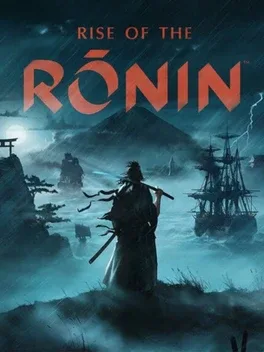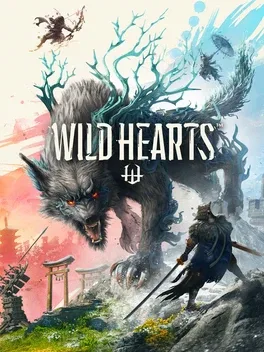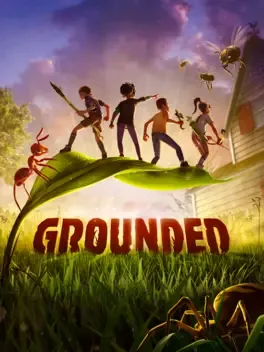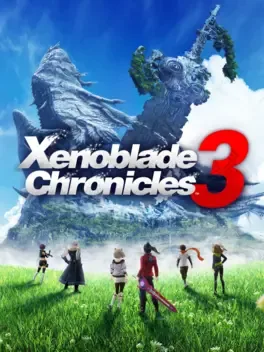TJ Denzer
This author account hasn't been claimed yet. To claim this account, please contact the outlet owner to request access.
Writing For
Latest Reviews
The Capcom Fighting Collections, Arcade Classics, Beat 'Em Up Bundles, and more have been pretty good up to this point, but there’s still so many amazing Capcom games and fighters that haven’t been available in reasonable form up to this point. Fortunately, another basket of gems is almost here in the form of the Capcom Fighting Collection 2. This is a collection of both Capcom Vs SNK games, both Power Stone games, Plasma Sword, Project Justice, Capcom Fighting Evolution, and even Street Fighter Alpha 3 UPPER. It’s an amazing collection - easily my favorite Capcom’s done so far and it plays like a dream compilation for the most part.
Xenoblade Chronicles is a beloved series with a dedicated fanbase, but 2015’s Xenoblade Chronicles X is a bit of a black sheep. It came out on the Wii U in 2015 and didn’t have long to impress before the platform’s discontinuation in 2017. Monolith Soft, however, saw value just begging to be explored, and they whipped up a definitive version of the game for Nintendo Switch to spread it beyond those faithful Wii U buyers of yesteryear. Xenoblade Chronicles X: Definitive Edition takes an already incredible open-world RPG, and improves it with a few quality-of-life improvements alongside spruced visuals, resulting in an even greater game.
Two Point Studios has built a long and storied reputation out of producing slapstick business management games, and the studio has looked more than ready to continue that legacy with Two Point Museum. This game puts players in charge of turning boring, empty museums into bustling and active attractions. It also features a cool variety of themes, enjoyable campaign progression, and unique mechanics to play around in each of them, as well as Two Point’s trademark humor, making it another wonderful entry in the Two Point Studios occupational resumé.
When the dust settles, there are several multiplayer options to explore and War Games is a solid gold winner that looks like it will continue to grow over time. I had only a few gripes, but Homeworld 3 plays incredible from top to bottom, and I think whether you’re a fan of the series that’s been waiting for this or a newcomer that just likes good strategy, everyone who takes control of the Khar Kushan is in for an absolute feast of stellar strategy gameplay.
Rise of the Ronin is an incredible open-world action-RPG. Its version of Bakumatsu era Japan is beautiful and delightful to explore, with plenty of activities that don’t fall deep into the open-world genre’s trap of being tedious. Its combat and customization are also incredibly well-refined, allowing you to become the martial artist you want to be, whether it’s an assassin, brigand, gunslinger, or more. The characters were fun to get to know and help a lot in reducing what would otherwise be some ridiculously difficult fights in the game. Don’t get me wrong though, this game has moments where it’s Team Ninja hard. Nonetheless, it’s still an incredible journey of cultural revolution and familial salvation. Between its solid combat, varied open world, and enjoyable characters, Rise of the Ronin sets a new tier of excellence in Team Ninja’s game design.
Under Night In-Birth 2 Sys:Celes is a great addition to what we had that improves upon previous games in pretty much all the right ways. The new characters are fun, the new attacks for existing characters make new gameplans fun to learn, and there is a nice variety of online and offline modes in which to explore them and hone your game. I wish the music, story, and online lobbies gave me more, but UNI2 hits the right notes where it counts and delivers as a fantastic bastion of 2D animated fighting game goodness.
The original System Shock was foundational to so many games that would come after it, but it aged like milk in its gameplay and visuals. Nightdive’s System Shock remake keeps much of its successful elements intact while doing away with a lot of its archaic issues that would drag down a modern game. It doesn’t do this perfectly. There are still a few pain points that I feel could have been addressed, but this is an incredible first-person adventure. I would go as far as to call it a solid survival horror game. Citadel is an amazing and ominous environment to explore, and SHODAN does you no favors in traversing it. However, it feels all the better when you overcome the challenge and open the path forward. I wish it had waypoints to help me keep track of my situation and it needs optimization on gamepads before it comes to consoles, but this is still an incredible reinvention of a monumental game and I’d argue it’s the best way to see what the first System Shock has to offer.
I loved Wild Hearts from the moment that a giant flower-infested rat spawned an entire towering cherry blossom tree in the middle of our epic first fight, and my love only grew as I experienced its weapons, gadgets, environments, music, and other creatures. More importantly, the Karakuri is more than a gimmick. It provides an incredible assortment of tools inside and outside of combat that make it a signature staple of Wild Hearts gameplay. When I felt like I mastered everything a weapon could do, it was the Karakuri and the variety of ways I could combine them with my gear that kept me invested in learning and experimenting. I love Monster Hunter, and Wild Hearts isn’t perfect, but it improves and diversifies on that formula in ways I don’t think any fan of this genre should overlook. I want to keep being in this world and I can’t wait to see how Koei Tecmo continues to expand upon it.
Of all the survival games I’ve played, Grounded is easily one of the coolest. The very theme of it is fun and the execution is pretty on target too. Playing as micro-sized kids in a vast yard full of pests and threats is really interesting, the story keeps exploration intriguing, and the progression, whether alone or with friends, feels satisfying. I’m not fond of how hard it is on normal difficulty alone, or the lack of variety among nearly required gear, but it really gets all the more delightful with friends helping. Even then, there’s plenty of ways to enjoy Grounded solo, too. Between Creative Modes, multiple difficulties, and a nice set of accessibility options, Grounded feels like one of the strongest entries to the survival genre in a long time.
Xenoblade Chronicles 3 hit a lot of good beats for me. The struggle of Noah, Mio, and their friends was engaging pretty much right from the start, especially given their bitter rivalry and how they come to trust and rely on one another. Their fight to survive this inhospitable world and put an end to the war that has defined their lives makes for an emotional journey aided by a gorgeous soundtrack that had me crying out loud in joy for their victories. The deep and engaging combat, customization, and exploration alongside the excellent music and narrative are all sorts of delicious icing on this cake of an adventure. Whether you’re a newbie to Xenoblade games or have played through the prior games, Xenoblade Chronicles 3 might be one of the better JRPGs to have graced the Xeno franchise throughout its lengthy history.









